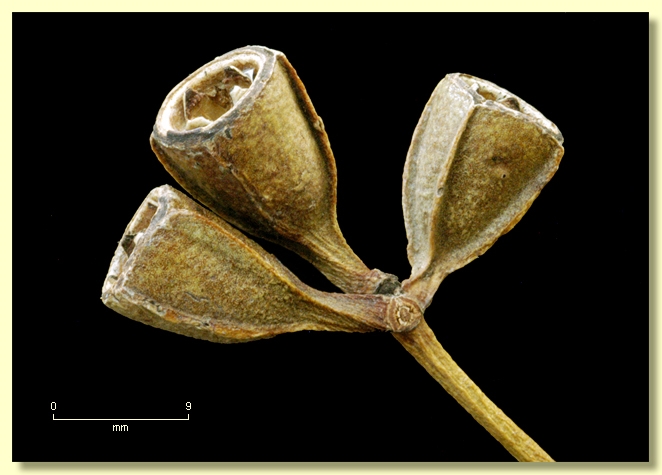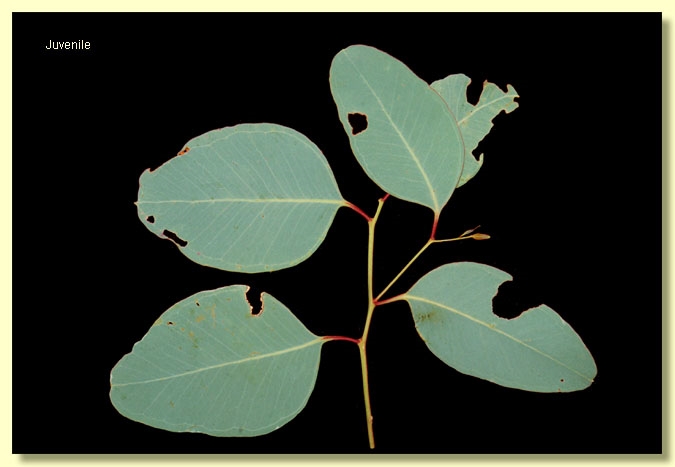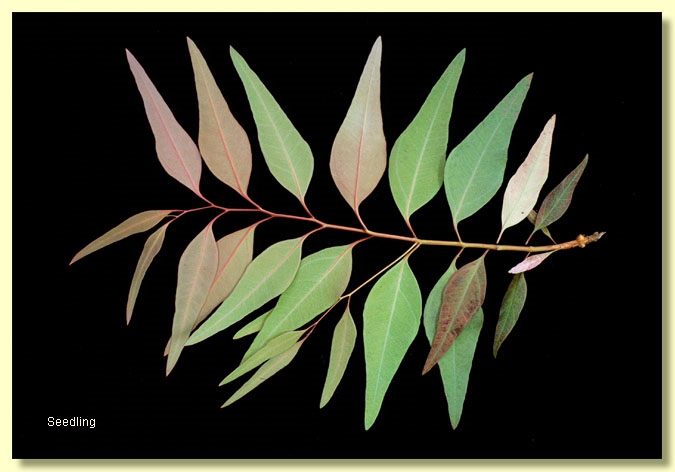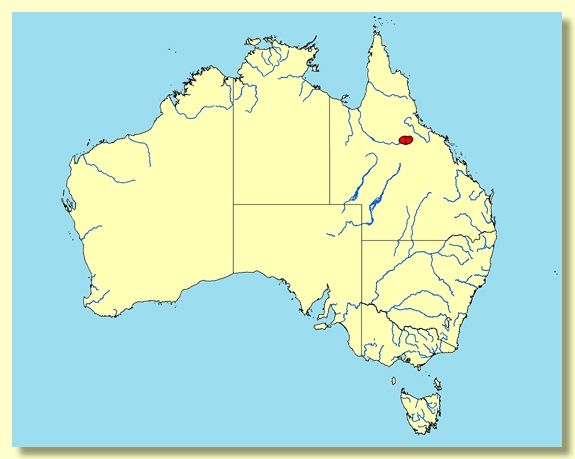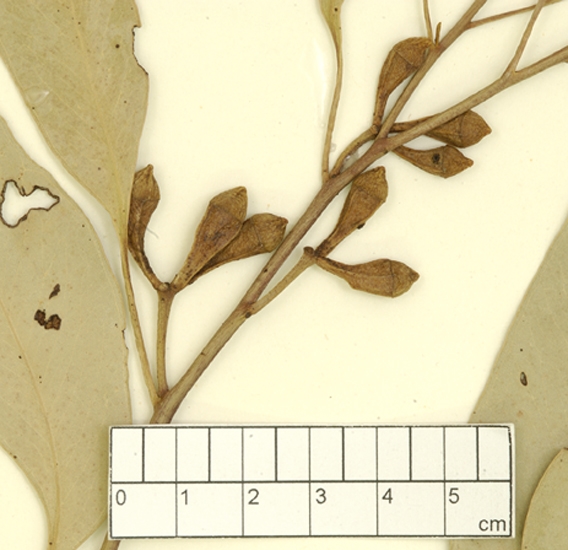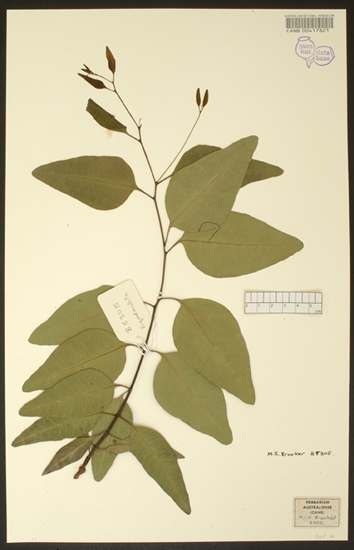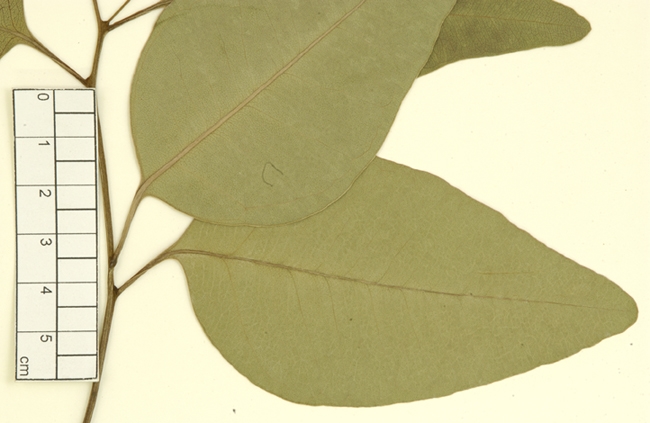Euclid - Online edition
Eucalyptus quadricostata
Eucalyptus | Symphyomyrtus | Adnataria | Apicales | Siderophloiae | Subglaucae
Small tree to 10 m tall, occasionally taller to 14 m. Forming a lignotuber.
Ironbark to small branches, dark grey or black.
Juvenile growth (coppice or field seedlings to 50 cm): stem rounded or square in cross-section, often glaucous; juvenile leaves opposite for a few pairs, then alternate, petiolate, ovate to sometimes almost orbicular, 7–12 cm long, 3.5–7 cm wide, blue-grey to glaucous.
Adult leaves alternate, petiole 1.5–3.2 cm long; blade lanceolate to falcate, 8–18 cm long, 1.2–3.6 cm wide, base tapering to petiole, concolorous, dull, new leaves dull grey-green, maturing dull to semi-glossy green, side-veins at an acute angle to midrib, densely to very densely reticulate, intramarginal vein parallel to and just within margin, oil glands mostly intersectional, sparse or obscure.
Inflorescence terminal compound or axillary single umbels, peduncles 0.5–2 cm long, buds 7 per umbel, pedicels (0.2)0.5–0.7(1) cm long. Mature buds clavate, hypanthium square in cross-section with four longitudinal ribs, 0.8–1.2 cm long, 0.4–0.6 cm wide, scar present, operculum conical to rounded to pyramidal, stamens usually irregularly flexed, anthers adnate, cuboid, dehiscing by broad lateral pores or slits, style long, stigma blunt, locules 3 or 4, the placentae each with 4 vertical ovule rows. Flowers white.
Fruit on pedicels 0.2–1 cm long, cup-shaped, hypanthium square in cross-section with four longitudinal ribs, 0.6–1.3 cm long, 0.6–1 cm wide, disc level to slightly ascending, valves 3 or 4, near rim level or slightly exserted.
Seeds dark brown, (1.2)1.5–2 mm long, ovoid or flattened-ovoid or pointed at one end, dorsal surface shallowly pitted, hilum ventral.
Cultivated seedlings (measured at ca node 10): cotyledons reniform to oblong; stems square in cross-section; leaves always petiolate, opposite for 4 to 8 nodes then alternate, ovate, 7–13 cm long, 2–7 cm wide, base tapering to rounded, dull green to grey-green or blue-grey.
Flowering has been recorded in January and July.
Small to medium-sized ironbark tree restricted to a small area in the White Mountains – Oakvale Station area north-west of Pentland in North Queensland. Characterised by its green, lanceolate adult leaves, its relatively large, blue-grey to glaucous, ovate to orbicular juvenile leaves and the buds and fruit square in cross-section.
Eucalyptus quadricostata is closely related to E. farinosa, another ironbark with buds and fruit square in cross-section and restricted to the Lolworth Ranges area approximately 30 km north-east of where E. quadricostata grows. E. farinosa differs by having dull, glaucous, broadly lanceolate to ovate adult leaves and larger orbicular juveniles.
With its square buds and fruit and its petiolate adult and juvenile leaves, E. quadricostata should not be confused with any other ironbark.
Eucalyptus quadricostata intergrades with other closely related ironbarks around the edges of its distribution.
MORE ABOUT IRONBARKS
Eucalyptus quadricostata: Latin quadri-, four and costatus, ribbed, referring to the four longitudinal ribs on the buds and fruit.






